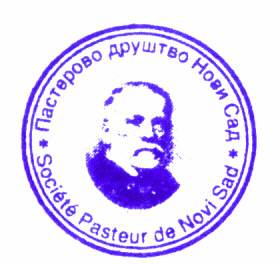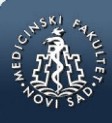md-medicaldata
Main menu:
- Naslovna/Home
- Arhiva/Archive
- Godina 2024, Broj 1
- Godina 2023, Broj 3
- Godina 2023, Broj 1-2
- Godina 2022, Broj 3
- Godina 2022, Broj 1-2
- Godina 2021, Broj 3-4
- Godina 2021, Broj 2
- Godina 2021, Broj 1
- Godina 2020, Broj 4
- Godina 2020, Broj 3
- Godina 2020, Broj 2
- Godina 2020, Broj 1
- Godina 2019, Broj 3
- Godina 2019, Broj 2
- Godina 2019, Broj 1
- Godina 2018, Broj 4
- Godina 2018, Broj 3
- Godina 2018, Broj 2
- Godina 2018, Broj 1
- Godina 2017, Broj 4
- Godina 2017, Broj 3
- Godina 2017, Broj 2
- Godina 2017, Broj 1
- Godina 2016, Broj 4
- Godina 2016, Broj 3
- Godina 2016, Broj 2
- Godina 2016, Broj 1
- Godina 2015, Broj 4
- Godina 2015, Broj 3
- Godina 2015, Broj 2
- Godina 2015, Broj 1
- Godina 2014, Broj 4
- Godina 2014, Broj 3
- Godina 2014, Broj 2
- Godina 2014, Broj 1
- Godina 2013, Broj 4
- Godina 2013, Broj 3
- Godina 2013, Broj 2
- Godina 2013, Broj 1
- Godina 2012, Broj 4
- Godina 2012, Broj 3
- Godina 2012, Broj 2
- Godina 2012, Broj 1
- Godina 2011, Broj 4
- Godina 2011, Broj 3
- Godina 2011, Broj 2
- Godina 2011, Broj 1
- Godina 2010, Broj 4
- Godina 2010, Broj 3
- Godina 2010, Broj 2
- Godina 2010, Broj 1
- Godina 2009, Broj 4
- Godina 2009, Broj 3
- Godina 2009, Broj 2
- Godina 2009, Broj 1
- Supplement
- Galerija/Gallery
- Dešavanja/Events
- Uputstva/Instructions
- Redakcija/Redaction
- Izdavač/Publisher
- Pretplata /Subscriptions
- Saradnja/Cooperation
- Vesti/News
- Kontakt/Contact
 Pasterovo društvo
Pasterovo društvo
- Disclosure of Potential Conflicts of Interest
- WorldMedical Association Declaration of Helsinki Ethical Principles for Medical Research Involving Human Subjects
- Committee on publication Ethics
CIP - Каталогизација у публикацији
Народна библиотека Србије, Београд
61
MD : Medical Data : medicinska revija = medical review / glavni i odgovorni urednik Dušan Lalošević. - Vol. 1, no. 1 (2009)- . - Zemun : Udruženje za kulturu povezivanja Most Art Jugoslavija ; Novi Sad : Pasterovo društvo, 2009- (Beograd : Scripta Internacional). - 30 cm
Dostupno i na: http://www.md-medicaldata.com. - Tri puta godišnje.
ISSN 1821-1585 = MD. Medical Data
COBISS.SR-ID 158558988
ALKOHOLEMIJA KOD UČESNIKA U SAOBRAĆAJNIM NEZGODAMA NA TERITORIJI BEOGRADA U PERIODU OD 2013-2016. GODINE
ALCOHOL INTOXICATION IN TRAFFIC ACCIDENTS IN BELGRADE IN PERIOD OF 2013-2016.
Authors
Zorana Jović1, Snežana Đorđević2,3, Vesna Kilibarda2,3, Slavica Vučinić2,3
1Stažer u Odeljenju za toksikološku hemiju Centra za kontrolu trovanja, Vojnomedicinske akademija
2Centar za kontrolu trovanja, Vojnomedicinska akademija
3Medicinski fakultet Vojnomedicinske akademije, Univerzitet odbrane, Beograd
The paper was received on 12.05.2017. / Accepted on. 30.05.2017
Correspondence to
Doc. Dr sc. pharm. Snežana Ðorđević
Docent na Medicinskoj hemiji Visoke
medicinske škole, akademskih studija VMA,
Vojnomedicinska akademija
Crnotravska 13
11000 Beograd
Tel. 011/36-09-481
Mob.tel. 060-336-70-38
e-mail: ivezicnela@yahoo.com
Abstract
Driving under the influence of alcohol is one of the leading causes of traffic accidents. The degree of alcohol intoxication has variously impact on the ability of driving a motor vehicle. The aim of this paper is representation of distribution of alcohol intoxication by the degree of intoxication from the year 2013. - 2016. , considering that the driving under the influence of alcohol is the main cause of traffic accidents on the territory of Belgrade. Statistical analysis of data indicates that the majority of traffic accidents arose when the driver drove a motor vehicle with level of alcohol concentration in the blood between 0.3 and 3 ‰. Besides, the number of drivers who had permitted concentration of alcohol in the blood is approximately five times lower in regard to those who had non-permitted concentration of alcohol in the blood. By tightening of The Law on Road Traffic Safety and by introduction of other safety measures one can affect the decline in the number of traffic accidents caused by drunken drivers.
Key words:
blood alcohol concentration, traffic accident
Sažetak
Upravljanje vozilom u stanju alkoholisanosti je jedan od vodećih uzroka saobraćajnih nesreća. Stepen alkoholisanosti u različitoj meri utiče na sposobnost upravljanja motornim vozilom. Cilj ovog rada je prikazivanje distribucije alkohemija po stepenu alkoholisanosti u periodu od 2013. do 2016. godine, s obzirom na to da je vožnja pod uticajem alkohola najčešći uzork saobraćajnih nesreća na teritoriji grada Beograda. Statističkom obradom podataka dobijeni su rezultati koji ukazuju na to da je najveći broj saobraćajnih nesreća nastao kada su vozači upravljali motornim vozilom sa koncentracijama alkohola u krvi između 0,3 i 3‰. Pored toga, broj učesnika u saobraćajnim nesrećama koji su imali dozvoljenje koncentracije alkohola u krvi je približno pet puta manji u odnosu na broj onih koji su imali nedozvoljenje koncetracije alkohola u krvi. Pooštravanjem Zakona o bezbednosti saobraćaja na putevima i uvođenjem drugih bezbedonosnih mera može se uticati na smanjenje saobraćajnih nesreća uzrokovanih vožnjom pod dejstvom alkohola.
Ključne reči:
vožnja pod dejstvom alkohola, koncentracija alkohola u krvi, saobraćajne nezgode
References
- Scott-Parker B, Stokes L, Panaho S, Cawkwell M, Caldwell J, Are you okay to drive? Commuting behavior and blood alcohol concentrations amongst restaurant diners., J Res Health Sci., Traffic Inj Prev., 2017 Feb 25:0
- Nistal-Nuño B, Impact of a New Law to Reduce the Legal Blood Alcohol Concentration Limit - A Poisson Regression Analysis and Descriptive Approach., 2017 Mar 31;17(1):E1-8
- Ferris J, Killian J, Lloyd B, Alcohol-related serious road traffic injuries between 2000 and 2010: A new perspective to deal with administrative data in Australia., Int J Drug Policy., 2017 Mar 27;43:104-112
- Van Dyke NA, Fillmore MT, Laboratory analysis of risky driving at 0.05% and 0.08% blood alcohol concentration. Drug Alcohol Depend., 2017 Mar 31;175:127-132
- Bivona U, Garbarino S, Rigon J, Buzzi MG, Onder G, Matteis M, Catani S, Giustini M, Mancardi GL, Formisano R., Effect of ethylic alcohol on attentive functions involved in drivingabilities., Arch Ital Biol., 2015 Jun-Sep;153(2-3):162-9
- McKee J, Widder SL, Paton-Gay JD, Kirkpatrick AW, Engels P, A Ten year review of alcohol use and major trauma in a Canadian province: still a major problem., J Trauma Manag Outcomes., 2016 Jan 21;10:2
- Cheng WC, Dao KL, The occurrence of alcohol/drugs by toxicological examination of selected drivers in Hong Kong., Forensic Sci Int., 2017 Apr 2;275:242-253
- Hamnett HJ, Ilett M, Izzati F, Smith SS, Watson KH, Toxicological findings in driver and motorcyclist fatalities in Scotland 2012-2015., Forensic Sci Int., 2017 May;274:22-26.
- Petković S, Palić K, Samojlik I, Blood alcohol concentration in fatally injured drivers and the efficacy ofalcohol policies of the new law on road traffic safety: A retrospective 10-year study in autonomous province of Vojvodina, Republic of Serbia., Traffic Inj Prev., 2016 Aug 17;17(6):553-7
- Laude JR, Fillmore MT, Drivers who self-estimate lower blood alcohol concentrations are riskier drivers after drinking., Psychopharmacology (Berl)., 2016 Apr;233(8):1387-94
- Begg D, Brookland R, Connor J, Associations of repeated high alcohol use with unsafe driving behaviors, traffic offenses, and traffic crashes among young drivers: Findings from the New Zealand Drivers Study., Traffic Inj Prev., 2017 Feb 17;18(2):111-117
- Sobngwi-Tambekou JL, Brown TG, Bhatti JA, Driving under the influence of alcohol in professional drivers in Cameroon., Traffic Inj Prev., 2016 Sep;17 Suppl 1:73-8
- Shield KD, Monteiro M, Roerecke M, Smith B, Rehm J, Alcohol consumption and burden of disease in the Americas in 2012: implications for alcohol policy., Rev Panam Salud Publica., 2015 Dec;38(6):442-9.
- Denić K., Rusić B., Đorđević S., Kilibarda V., Brajković G., Rančić D., Alkoholemija kao uzrok saobraćajnih nezgoda u Beogradu tokom 2011. i 2012. godine, MD-Medical Data, 2013;5(1): 023-026
- Rančić D., Brajković G., Zlatković M., Kilibarda V., Učestalost alkoholemije kod vozača na teritoriji Beograda u 2009. godini, Med Data Rev, 2010. 2(3): 213-216
- Kumar S, Bansal YS, Singh D, Medhi B, Alcohol and Drug Use in Injured Drivers - An Emergency Room Study in a Regional Tertiary Care Centre of North West India., J Clin Diagn Res., 2015 Jul;9(7):HC01-4.
- Leporati M, Salvo RA, Pirro V, Salomone A, Driving under the influence of alcohol. A 5-year overview in Piedmont, Italy., J Forensic Leg Med., 2015 Aug;34:104-8.
UDK: 656.1.086.15(497.11) "2013/2016"
COBISS.SR-ID 239036940
PDF Jović Z. et al. MD-Medical Data 2017;9(2): 101-105
 Medicinski fakultet
Medicinski fakultet